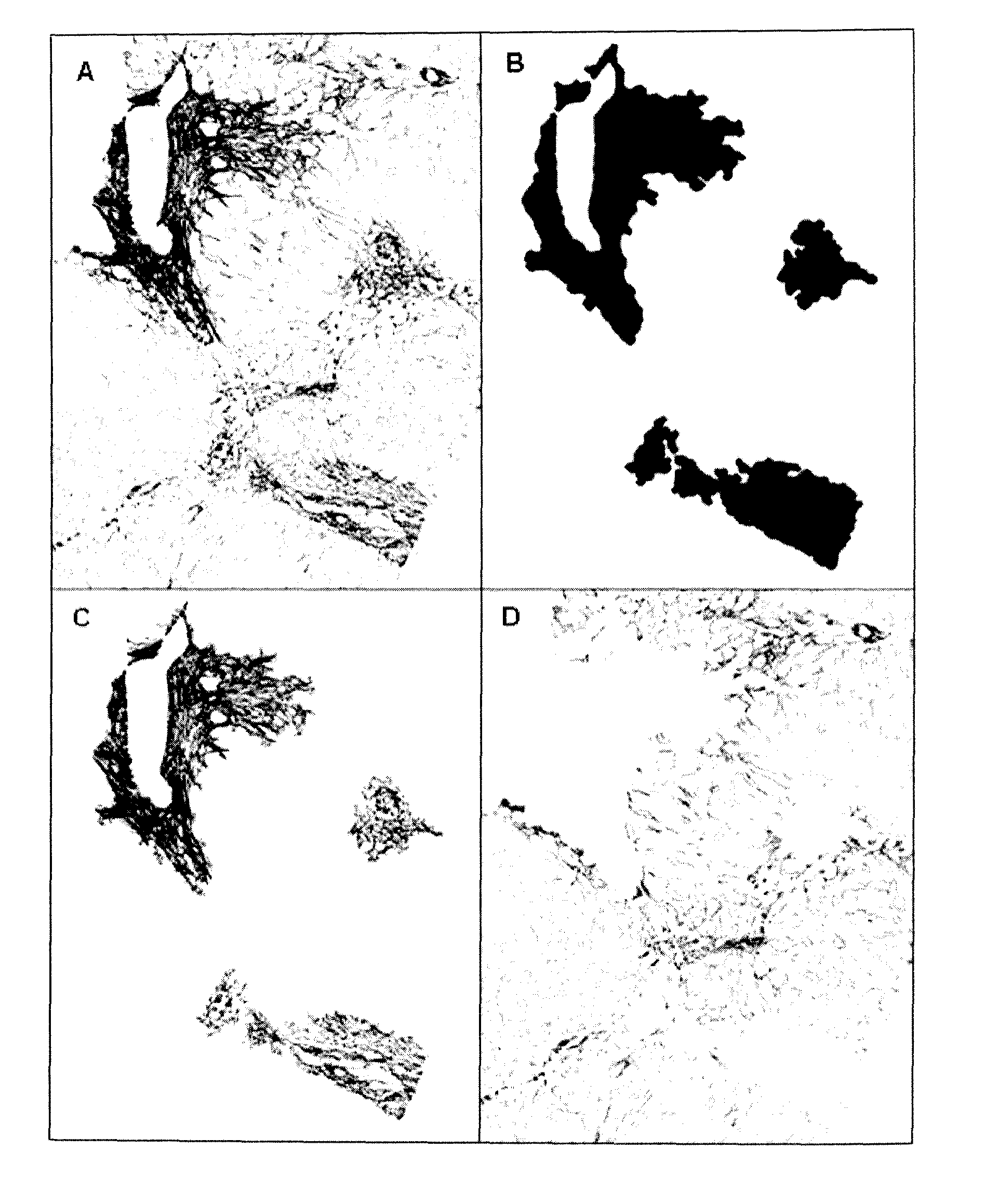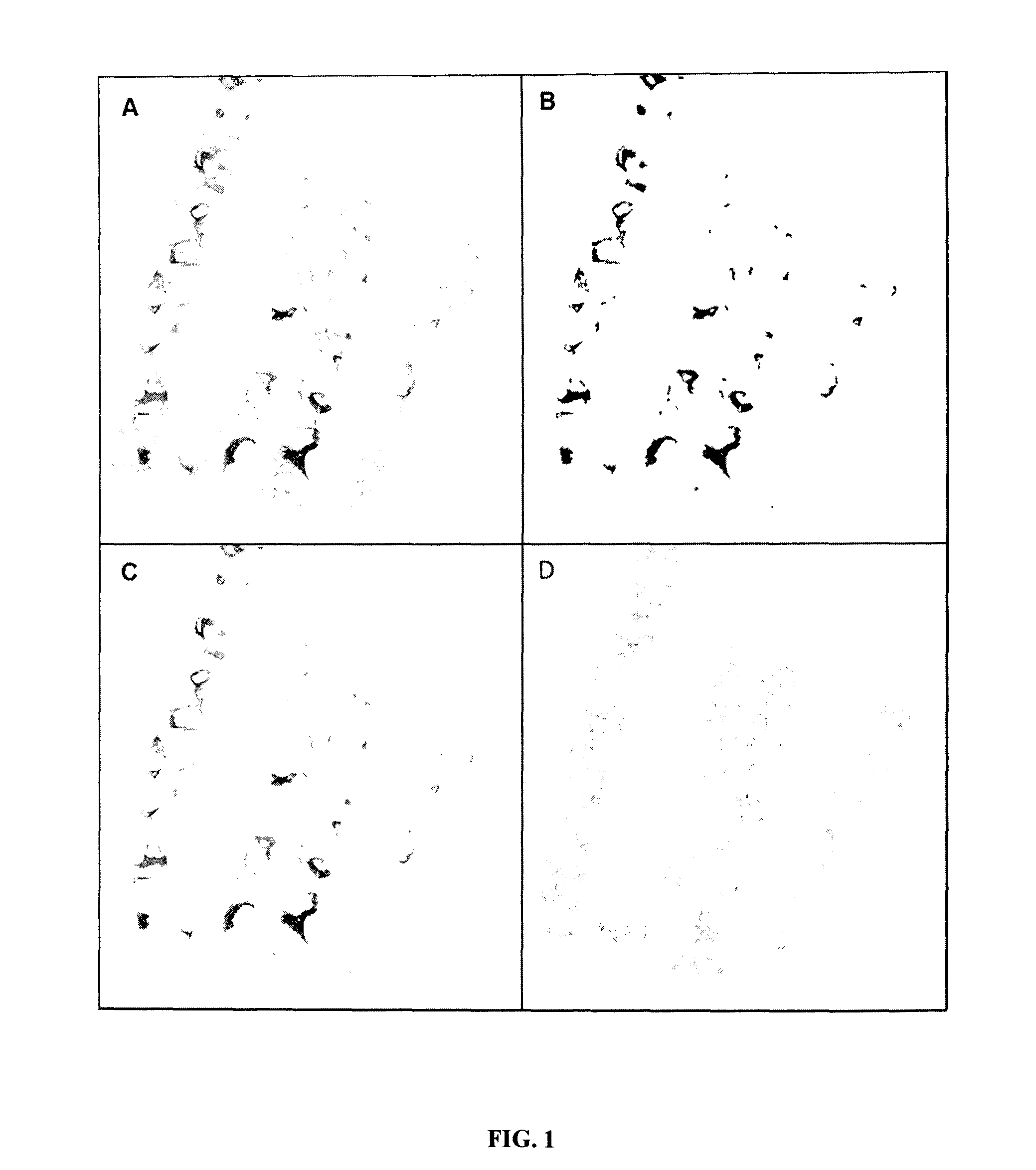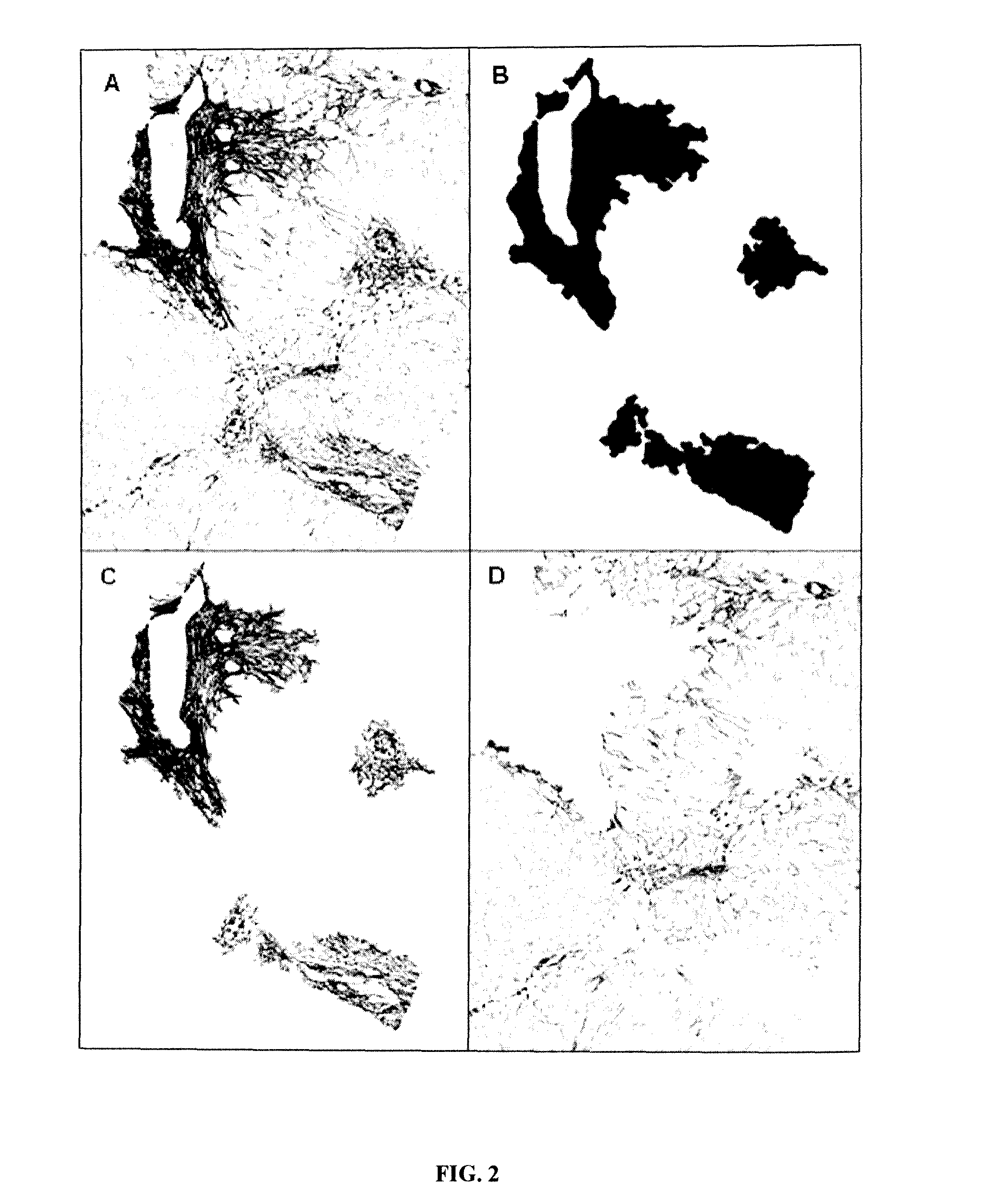Automatic measurement of lesions on medical images
a technology of medical images and lesions, applied in the field of analysis of medical images, can solve the problems of poor inter- or intra-observer reproducibility between single experts, increased mortality, and single experts not reaching excellent reproducibility
- Summary
- Abstract
- Description
- Claims
- Application Information
AI Technical Summary
Benefits of technology
Problems solved by technology
Method used
Image
Examples
example 1
Automatic Measurement of Lesions in a Histological Image
Methods
Study Design
[0387]The morphometric diagnosis by automated morphometry was designed to diagnose clinically significant fibrosis (CSF), cirrhosis and Metavir F stages. The diagnostic models were developed in the derivation population. These results were validated by using two kinds of population:[0388]Populations with reference Metavir staging by expert to validate the diagnostic accuracy of diagnostic models based on automated morphometry.[0389]Population with Metavir staging performed by a first line pathologist to compare the diagnosis made by automated morphometry with that performed in real life conditions.
The conditions of liver biopsy specimens were the same in all populations. Especially, specimen lengths were the same and staining and morphometry performed by the same engineer were made centrally in the HIFIH laboratory.
Populations
Derivation Population
[0390]416 patients with chronic viral hepatitis C and a length ...
example 2
Reliability
[0436]The accuracy of prediction is imperfect. These inaccurate results are not due to chance and can be predicted by statistical analysis providing significant independent predictors of accuracy. This defines the reliability analysis. Thus, one can calculate reliability classes where the accuracy varies and predictors can be different.
[0437]For example, a perfect result has 100% accuracy. A reliability analysis can determine reliability classes from 0 to 10, 20, 30, 40, 50, 60, 70, 80, 90% accuracy with specific predictors for each reliability class.
[0438]Predictors are issued from the list of descriptors of the invention.
[0439]For example, we provide here different predictive models obtained in different populations by binary logistic regression.
Tables of the Coefficients of the Binary Logistic Regression for Prediction of Accuracy for Clinically Significant Fibrosis
[0440]
Model # 1, AUROC = 0.656VariableLowerCoefficientUpperStd. errorz-valueProb(Intercept)1.93884.21356....
example 3
Diagnosis of NASH
[0442]Non-alcoholic fatty liver disease (NAFLD) is a frequent pathology. It encompasses the liver lesions linked to metabolic syndrome. It evolves from pure steatosis to non-alcoholic steato-hepatitis (NASH) and liver fibrosis. NASH includes several lesions: steatosis, hepatocyte ballooning, and lobular inflammation (Sanyal Hepatology 2011). An international expert team has described a NAFLD activity score (NAS) (Kleiner Hepatology 2005).
[0443]We have measured several lesions in a cohort of 235 patients with NAFLD. Optical microscopy included classical lesions (steatosis degree, NAS, NASH and fibrosis). Morphometry with image analysis included automatic measurement of area of steatosis (AOS) and fractal dimension of steatosis (DS) as well as area of fibrosis (AOF) and fractal dimension of fibrosis (DF). We also defined the relative Area of Steatosis (rAOS) as the area of steatosis in the non-fibrotic area.
[0444]Whatever the fibrosis stage, NAS was globally well corr...
PUM
 Login to View More
Login to View More Abstract
Description
Claims
Application Information
 Login to View More
Login to View More - R&D
- Intellectual Property
- Life Sciences
- Materials
- Tech Scout
- Unparalleled Data Quality
- Higher Quality Content
- 60% Fewer Hallucinations
Browse by: Latest US Patents, China's latest patents, Technical Efficacy Thesaurus, Application Domain, Technology Topic, Popular Technical Reports.
© 2025 PatSnap. All rights reserved.Legal|Privacy policy|Modern Slavery Act Transparency Statement|Sitemap|About US| Contact US: help@patsnap.com



